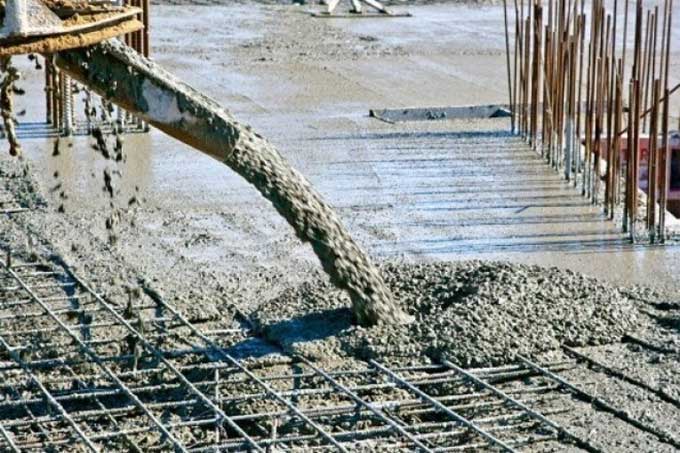
What is Vacuum Concrete and what are its Advantages and Disadvantages
Concrete which is extracted from water by vacuuming before hardening is referred to as vacuum concrete. Consolidation can usually be achieved using concrete types having a relatively high slump in thin slabs or walls. Utilizing vacuum pumps and mats connected to vacuum mats, a considerable amount of water and air is removed from close to the surface.
There is a plywood backing and a vacuum chamber formed of expanded metal. The chamber is covered by a fabric and fine wires gauge. Every mat has a valve-controlled outlet for attaching to a vacuum pump.
Working Process
- Water quality and cement proportion determine the duration of treatment. For slab thicknesses of 25 mm to 125 mm, the process usually takes 1 to 15 minutes. An effect of treatment that is more pronounced at first but quickly diminishes. In this case, prolonging the treatment beyond these values is not of benefit.
- Water cement ratios below 0.4 don't respond well to the vacuum treatment. There is a suction pressure on the concrete of one-third the atmospheric pressure. It is possible to assist the vacuum treatment process by vibrating the concrete before vacuuming.
- In addition to first vibrating, vacuum treatment can be very effective when performed simultaneously. Vibrations greater than 90% may cause damage to concrete. For the remainder of the duration of the treatment, vibrations need to cease and the only vacuum needs to be applied.
- Vacuum treatment significantly reduces the time needed for finishing a floor and stripping all forms. Increase in the strength of concrete and the resistance to wear and abrasion, as well as a decrease in shrinkage. Vacuum-treated concrete allows for a good bond to the underlying concrete.
- Vacuum-processed concrete is widely used in the manufacture of precast concrete units, both plain and reinforced. In addition, concrete slabs can be made for horizontal and sloping purposes, such as pavements for roads and airports, thin loads, and partition walls. Resurfacing, refacing, and repairing of road pavement are additional uses of Vacuum concrete.
Vacuum concrete production equipment
In order to produce vacuum concrete, you'll need the following equipment:
- Formwork.
- Vacuum pump with hose.
- Filtering pad.
- Suction mat.
- Double beam screed vibrator.
- Power float.
- Power Trowel.
A variety of applications for vacuum concrete
1. Vacuum concrete is used primarily in hydropower plants.
2. Vacuum concrete is used as a cooling tower.
3. In addition to industrial floors and cold storages, vacuum concrete can be used in garages and warehouses as well.
4. Many port and harbor bridges are constructed with vacuum concrete.
Pros of Vacuum Concrete
- Approximately 25% increase in the strength of concrete
- A decrease in permeability of concrete that is sufficient
- The high-density concrete
- The bond strength of concrete was increased by about 20%
- Reduced final finishing time by a significant amount
- Removal of wall forms as early as possible
- The surfaces are completely free from pitting
Cons of Vacuum Concrete
- A specific piece of equipment is needed.
- This requires skilled labor.
- Consumption of power is necessary.
- Initial costs are high.
- Concrete's porosity allows water, oil, and grease to seep through, causing the concrete to weaken.
Conclusion
Vacuum concrete is a technique that involves extracting excess water to compensate for workability and increase strength.
As a result of the reduction in the water-cement ratio, concrete is stronger and more durable as well as more resistant to abrasion, abrasion, and abrasion, and more bondable.
Less water allows for earlier removal of the formwork. Additionally, concrete with more than 0.4 water-cement ratios can be compacted effectively.
There are many applications for it, including slabs, where workability is important.
A vacuum operation may leave voids or channels behind in some instances, but this can be addressed by vibrating concrete to prepare the concrete before applying vacuum.


